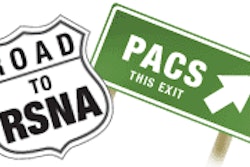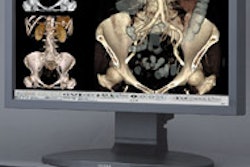CHICAGO - Enterprisewide PACS was able to generate a return on investment within three and half years at a large academic institution, according to research from the University of Pittsburgh Medical Center (UPMC).
"Despite concerns about the cost justification of PACS, large centers can realize a rapid return on their investment," said Dr. Matthew Morgan. He presented his institution's experience Thursday at the 2004 RSNA meeting in Chicago.
Prior PACS cost analyses tended to be radiology-centric, and tended to underestimate the impact on the enterprise from the transition to digital image management, Morgan said. Also, they were often theoretical in nature, as the technology was so new.
UPMC decided to calculate its return on investment (ROI) from its second-generation PACS network (which added enterprisewide capability), tracking each year after implementation. That PACS installation began in July 2000 and was completed in April 2002.
The research team calculated film-based costs and PACS costs, then compared the two expenses. A payback period and ROI were determined.
The researchers calculated that the average film cost per study was $20, including $15.50 for generating film and $4.50 of film-related support costs. Film-generation costs would likely be lower for community hospitals, as the case volume for cross-sectional exams is typically lower, Morgan said.
At 1.15 million imaging exams per year, film-related costs reached $23 million.
PACS included capital costs of $13.5 million, including common IT infrastructure costs of $2.8 million, PACS-specific IT costs of $4.1 million, and modality-specific costs (such as upgrades to CR or DR) of $6.6 million.
"Modality-specific costs can be one of the most significant costs in your transition (to PACS), and that is sometimes underestimated," he said.
Operational costs (for the institution's application service provider model) added $1.5 million to the cost of PACS, as well as residual film costs of $5.6 million. Total PACS costs were $20.6 million.
Subtracting the true cost of PACS from film-based costs, the institution realized $2.4 million in savings. Yearly savings were calculated by multiplying the imaging volume by savings per case, then dividing by the percentage of filmless operations for the year. Payback was reached by 3.5 years; annual ROI was 28.5%.
The key to success for UPMC was the adoption of high-quality, on-demand enterprise digital image distribution to eliminate film and its associated costs, Morgan said. He noted that the ROI of PACS for smaller hospitals will be substantially different, and will likely be less, due to differing film costs and enterprisewide distribution requirements.
"If your case mix includes a lot of projection radiography and not a lot of cross-sectional imaging, your cost of film is going to be less," Morgan said. "However, I would argue that as time goes on, smaller institutions will do more cross-sectional imaging and approach more of the larger-institutional model. Also, requirements for enterprise distribution will increase as smaller community hospitals consolidate into a network. So really, the ROI for smaller hospitals will increase with time."
PACS is also characterized by a maturing paradigm, transitioning from a cost-justification approach to a total cost of ownership model, he said. This model better reflects not only the cost of PACS to the radiology department, but the value of PACS to the enterprise, Morgan said.
By Erik L. Ridley
AuntMinnie.com staff writer
December 2, 2004
Related Reading
Patient identification aided by picture wristbands, December 2, 2004
Telerad services solve problems, generate revenue, December 1, 2004
PACS plus paperless proves powerful, November 29, 2004
Copyright © 2004 AuntMinnie.com



















